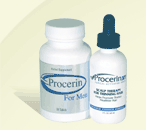Colloidal Silver Colloid particle surface area ,make the colloidal silver medicines effective for treating some ailments.
Colloid particle surface area increases as the concentration of metal particles increases. Colloids that have the highest percentage of their metal content in the form of nanoparticles will have the highest particle surface area. Therefore, colloids that are mostly ionic will have a low particle surface area since most of the metal content is in the form of metal ions not nanoparticles.
Colloid particle surface area increases as the particle size decreases. The highest particle surface area is achieved when there is a high concentration of nanometer or sub-nanometer sized particles. While this is the desired result, it is also the most difficult to achieve. Colloids containing high concentrations of large particles as found in silver protein products will have low particle surface area.
Ratio of surface area to mass is an expression of how efficiently a given mass of silver (concentration) is able to provide particle surface area. This ratio is calculated by dividing the particle surface area (sq. cm) by the mass (mg/L). For Colloidal Silver this value would be 5.23 (104.7/20). The higher this value is the more efficiently the silver is being utilized to increase the particle surface area (effectiveness) of the colloid. To put this value in perspective, a typical ionic silver product has a surface area to mass ratio of about 0.021 and a typical silver protein product has a ratio of about 0.024. The ratio for Colloidal Silver over 200 times greater than either of these product types. In fact no other colloidal silver product has a surface area to mass ratio that even comes close to Colloidal Silver.







